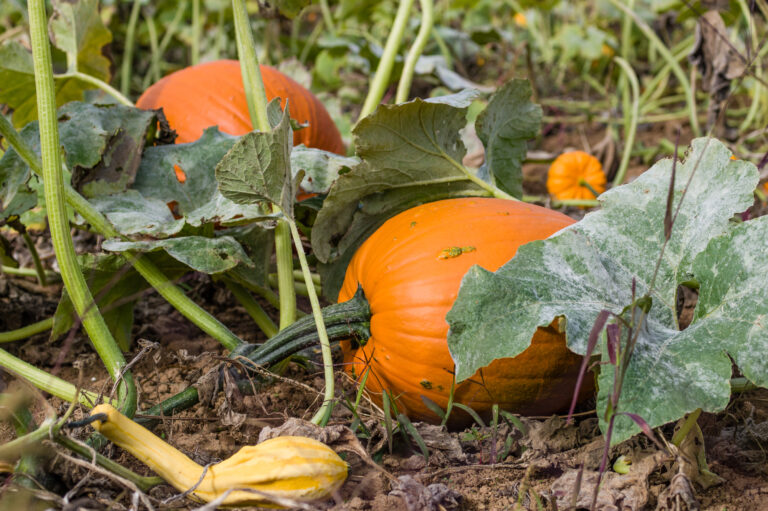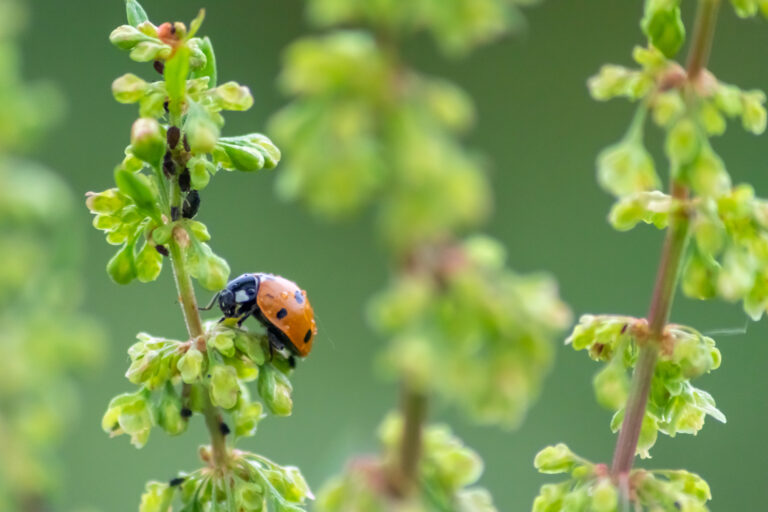Control powdery mildew with milk!
Using milk as a pesticide is a sustainable and eco-friendly method to protect crops from pests and diseases. This natural alternative to chemical pesticides has been gaining popularity among farmers and gardeners worldwide. Milk contains proteins and enzymes that have antimicrobial and antifungal properties, making it an effective solution to control plant diseases.
Milk has been used for centuries as a natural remedy for various ailments, and its use as a pesticide is not a new concept. The idea of using milk as a pesticide was first introduced in the 1920s when researchers discovered that spraying milk on plants helped to control powdery mildew, a common fungal disease that affects many crops. Since then, several studies have been conducted to explore the effectiveness of milk as a pesticide against other plant diseases and pests.
The use of milk as a pesticide has many benefits. Unlike chemical pesticides, milk is non-toxic and safe for humans and animals. It is also readily available and inexpensive, making it an affordable option for small-scale farmers and gardeners. Additionally, using milk as a pesticide can help to reduce the environmental impact of agriculture by minimizing the use of harmful chemicals that can contaminate soil and water.
Historical Use of Milk as Pesticide
Milk has been used as a pesticide for centuries, with evidence of its use dating back to ancient civilizations such as the Greeks and Romans. In fact, the Greek philosopher and scientist Aristotle recommended using milk as a pesticide in his book “The History of Animals.”
The use of milk as a pesticide continued throughout the centuries, with farmers and gardeners using it to control pests on their crops. Milk was particularly effective in controlling powdery mildew, a common fungal disease that affects a wide range of plants.
One of the reasons milk was so effective as a pesticide is because it contains a protein called casein, which has antifungal properties. When sprayed on plants, the casein in milk forms a thin film that helps prevent fungal spores from germinating and spreading.
In addition to its antifungal properties, milk also has insecticidal properties. Studies have shown that milk can be effective in controlling a wide range of pests, including aphids, spider mites, and thrips. The exact mechanism by which milk kills insects is not yet fully understood, but researchers believe that it may be due to the milk’s ability to suffocate or dehydrate the pests.
Overall, the historical use of milk as a pesticide demonstrates the effectiveness of natural solutions in controlling pests. While modern pesticides have largely replaced milk as a pesticide, there is still interest in using milk and other natural solutions as a way to reduce the use of synthetic pesticides and promote sustainable agriculture.
Scientific Basis
Milk has been used as a pesticide for centuries, and recent studies have shown that it can be just as effective as chemical pesticides. The scientific basis for using milk as a pesticide lies in its ability to control fungal and bacterial diseases in plants.
Milk contains a natural fungicide called “lactoferrin,” which helps to prevent the growth of fungi on plant leaves. It also contains “casein,” a protein that has been shown to be effective against bacteria. When milk is sprayed onto plant leaves, these compounds work together to create a protective barrier that helps to prevent the growth of harmful microorganisms.
Studies have shown that milk can be effective against a wide range of plant diseases, including powdery mildew, black spot, and rust. In fact, some studies have shown that milk can be just as effective as chemical fungicides in controlling these diseases.
Milk can also help to improve the overall health of plants. It contains a variety of nutrients, including calcium and potassium, which can help to strengthen plant cell walls and improve their ability to resist disease.
Overall, the scientific basis for using milk as a pesticide is strong. Its natural fungicidal and bactericidal properties make it an effective alternative to chemical pesticides, and its ability to improve plant health makes it a valuable addition to any organic gardening program.
Preparation and Application
To use milk as a pesticide, it is important to prepare it properly and apply it correctly. Here are some steps to follow:
- Dilute the milk: Mix one part milk with two parts water. This will create a solution that is gentle enough to use on plants without damaging them.
- Add a few drops of dish soap: The dish soap will help the solution stick to the leaves of the plant and make it more effective at killing pests.
- Stir the solution: Mix the milk, water, and dish soap together until they are well combined.
- Pour the solution into a spray bottle: This will make it easy to apply the solution to the plants.
- Apply the solution: Spray the solution onto the leaves of the plants, making sure to cover both the top and bottom of the leaves. Repeat this process every few days until the pests are gone.
It is important to note that milk should not be used as the sole method of pest control. It can be used as a supplement to other pest control methods, but it is not a replacement. Additionally, milk should not be used on all types of plants. It is best to test it on a small area of the plant first to make sure it does not cause any damage.
Benefits of Using Milk as Pesticide
Milk is a natural and eco-friendly alternative to chemical pesticides. It has been used as a pesticide for centuries and has proven to be effective against a wide range of pests. Here are some benefits of using milk as a pesticide.
Environmental Impact
Milk is a biodegradable and non-toxic substance, which makes it an ideal choice for eco-friendly pest control. Unlike chemical pesticides, milk does not harm the environment, including soil, water, and air. It is also safe for animals, birds, and beneficial insects.
Cost Effectiveness
Using milk as a pesticide is cost-effective compared to chemical pesticides. Milk is readily available and affordable, which makes it an attractive option for small-scale farmers and gardeners. It also reduces the need for expensive and harmful chemical pesticides, which can save money in the long run.
Health Aspects
Milk is a safe and healthy alternative to chemical pesticides. It does not pose any health risks to humans or animals, making it a suitable option for organic farming and gardening. Milk also contains nutrients that can benefit plants, such as calcium, which can strengthen cell walls and improve plant growth.
In conclusion, using milk as a pesticide has many benefits, including its eco-friendliness, cost-effectiveness, and safety. It is an ideal option for those who want to avoid harmful chemical pesticides and promote sustainable farming and gardening practices.
Potential Drawbacks
Limitations
While milk has been found to be effective as a pesticide, there are some limitations to its use. One of the main drawbacks is that it is not effective against all types of pests. Milk has been found to be most effective against aphids, spider mites, and mealybugs, but it may not be as effective against other pests such as caterpillars or beetles.
Another limitation is that milk needs to be applied frequently in order to be effective. This can be time-consuming and may not be practical for large-scale farming operations. Additionally, milk can be expensive to use as a pesticide, especially if it needs to be applied frequently.
Possible Side Effects
While milk is generally considered safe for use as a pesticide, there are some possible side effects to be aware of. Milk can cause allergic reactions in some people, so it is important to wear protective clothing and gloves when handling it. In addition, milk can leave a residue on plants that may be visible and could potentially affect the taste of fruits and vegetables.
It is also important to note that milk may not be safe for use on all types of plants. Some plants may be more sensitive to milk and could be damaged by its use. It is recommended to test a small area of the plant before applying milk to the entire plant to ensure that it is safe to use.
Overall, while milk can be an effective and natural alternative to chemical pesticides, it is important to be aware of its limitations and possible side effects before using it as a pesticide.
Comparisons with Other Organic Pesticides
When it comes to organic pest control, there are many options available to farmers and gardeners. Milk, as a pesticide, has some unique benefits that set it apart from other organic pesticides.
One of the main advantages of using milk as a pesticide is that it is readily available and inexpensive. Many other organic pesticides require special ordering or expensive ingredients, making them less accessible to the average gardener. Milk, on the other hand, is a common household item that can be easily obtained.
Another benefit of using milk as a pesticide is that it is safe for both humans and the environment. Unlike synthetic pesticides, which can be harmful to both people and wildlife, milk is non-toxic and biodegradable. This makes it a great option for those who are concerned about the impact of pesticides on the ecosystem.
Compared to other organic pesticides, milk is also relatively easy to apply. It can be sprayed directly onto plants or mixed with other ingredients to create a more potent solution. Additionally, milk has been shown to have some additional benefits, such as providing nutrients to plants and helping to prevent fungal infections.
Overall, while there are many organic pesticides available, milk is a safe, affordable, and effective option for those looking to control pests in their garden or on their farm.
Future Scope and Research
As milk has shown promising results as a pesticide, there is a need for further research to determine its effectiveness in different crops and pests.
Researchers can explore the use of different types of milk, such as skim milk, whole milk, and buttermilk, to determine which one works best as a pesticide. Additionally, the concentration of milk that is required to effectively control pests can be studied.
Further studies can also be conducted to determine the mode of action of milk as a pesticide. This will help in understanding how milk affects pests and how it can be optimized for better results.
The effect of milk on beneficial insects and microorganisms can also be studied to determine its impact on the ecosystem. This will help in ensuring that milk is a safe and sustainable alternative to synthetic pesticides.






